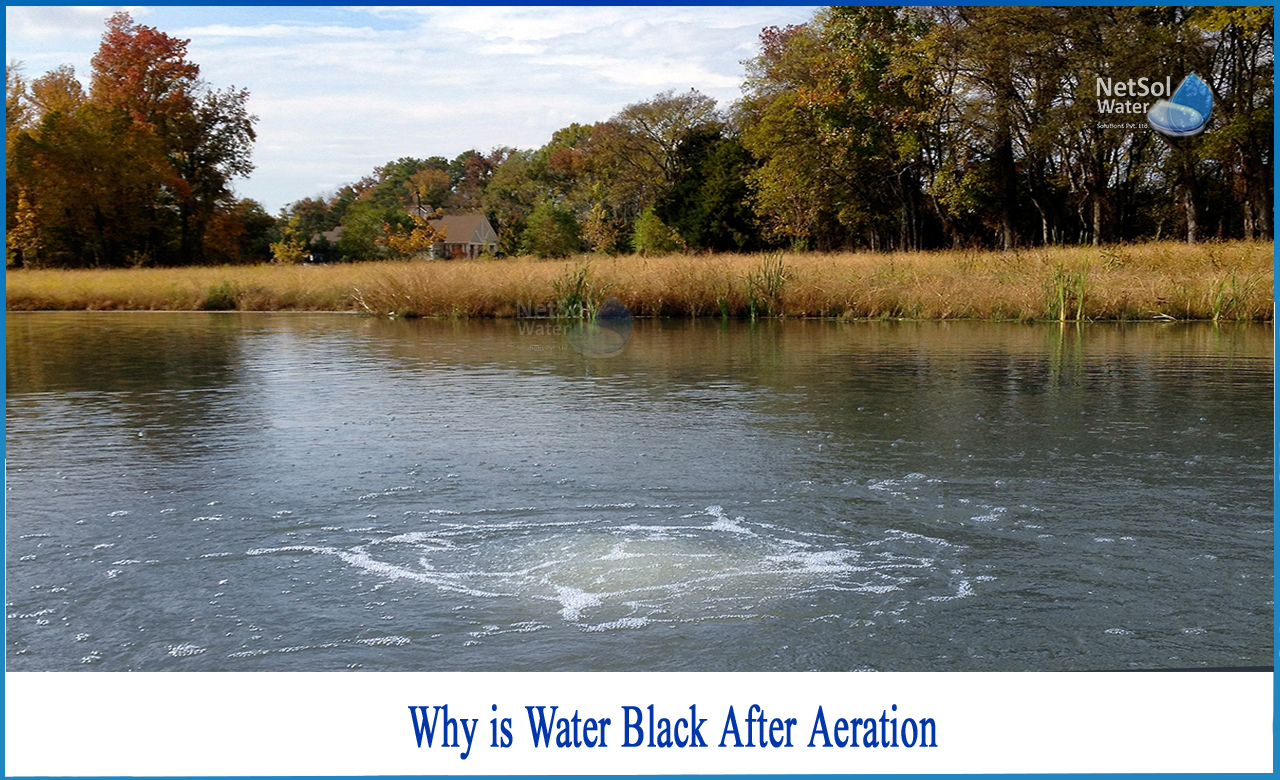Why is Water Black after Aeration?
Wastewater operators are expected to monitor or observe treatment unit activities in order to maintain optimum performance and to make modifications as needed.
When monitoring the operation of an aeration tank, the operator should look for three physical parameters: turbulence, surface foam &scum, and sludge colour and odour.
These three physical parameters help determine how the process is operating and indicate whether any operational adjustments should be made. This data should be documented each time operational tests are carried out.
What is aeration? What are its uses?
Aeration is the process of bringing water and air together to remove dissolved gases (such as carbon dioxide) and oxidize dissolved metals such as iron, hydrogen sulphide, and volatile organic compounds (VOCs). It is typically the first important stage in the treatment of wastewater at a wastewater treatment facility. Netsol’s aeration equipment’s remove or change constituents before they can interfere with treatment strategies.
Aeration also assists in the removal of dissolved metals by oxidation, which is the chemical interaction of oxygen from the air with some undesirable metals in water. When these chemicals oxidize, they precipitate out of solution and form particles in the water, which may be removed by filtration or flotation.
Aeration brings water and air together by exposing droplets or thin sheets of water to air or by introducing small bubbles of air (the smaller the bubble, the better) and allowing them to rise through the water. The aeration turbulence scrubbing technique physically removes dissolved gases from solution and allows them to escape into the surrounding air.
Scum and surface foam formation in Aeration Tanks
The kind, colour, and amount of foam or scum present may suggest the necessary waste approach.
Foam types include the following:
• Fresh, crisp, white foam—Moderate volumes of fresh, crisp white foam are often linked with activated sludge systems that produce excellent end effluent (normal operation; no adjustment necessary).
• Thick, greasy, dark tan foam—Thick, greasy dark tan or brown foam or scum usually implies aged, overoxidized sludge, a high mixed liquor content, and an excessive waste rate (old sludge; more wasting required).
• White billowing foam—A large volume of white, soap-like foam indicates a very immature, under oxidized sludge (young sludge; less wasting required).
Colour and odour of sludge
Sludge hues and odour are also valuable indications of processes, albeit not as dependable as foam.
Important colours and scents include the following:
• Normal functioning is indicated by a chocolate brown/earthy odour (no adjustment necessary).
• A light tan or brown colour with no odour implies sand and clay infiltration/inflow (extremely young sludge; decrease wasting).
• A dark brown/earthy odour denotes ancient sludge with a high solids content (increase wasting).
• The presence of a black hue and a rotten-egg stench implies septic conditions, a low dissolved oxygen content, and an insufficient airflow rate (increase aeration).
If you want to learn more about aeration and its procedures, then you can have an expert solution upon contacting Netsol Water, a leading manufacturer of Industrial and Commercial Water Treatment Plants and Wastewater Treatment Plants, among other services. Our treatment systems are very effective at removing all types of chemical, physical, and biological pollutants.
Netsol Water is Greater Noida-based leading water & wastewater treatment plant manufacturer. We are industry's most demanding company based on client review and work quality. We are known as best commercial RO plant manufacturers, industrial RO plant manufacturer, sewage treatment plant manufacturer, Water Softener Plant Manufacturers and effluent treatment plant manufacturers. Apart from this 24x7 customer support is our USP. Call on +91-9650608473, or write us at enquiry@netsolwater.com for any support, inquiry or product-purchase related query.



